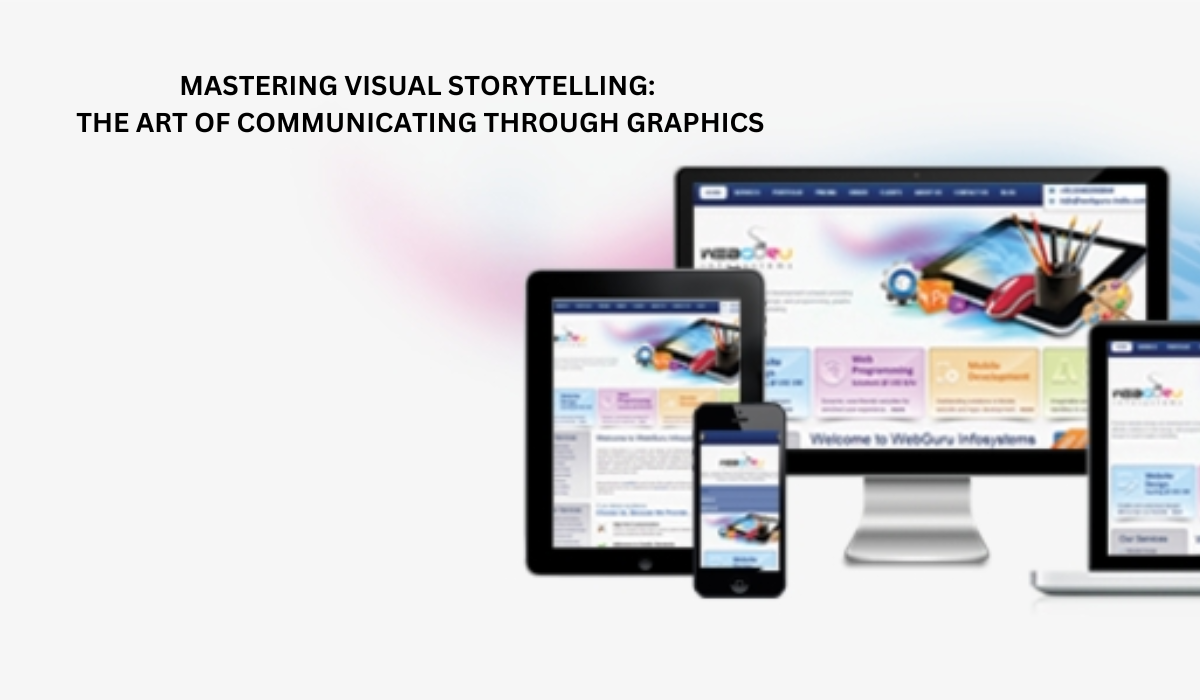With the rise of more and more digital spaces and gadgets, attention spans are shorter than ever! Here comes the need of using the power of visual storytelling to captivate and leave an impression. Whether it’s through illustrations, infographics, or engaging videos, graphics have the ability to convey complex messages in a way that grabs the audience’s attention and leaves a lasting impact.
But how does one master the art of visual storytelling? In this blog, we will explore the techniques, tips, and tricks that can help you become a master of communicating through graphics. So, if you’re ready to allure your audience and bring your ideas to life, read on to discover the secrets of visual storytelling.
Crafting a Visual Symphony
Visual storytelling isn’t just about arranging images on a canvas; it’s about orchestrating a symphony that resonates with your audience. Just like a conductor brings different musical elements together, you’re the maestro of visuals, merging colours, shapes, and emotions.
The Palette of Emotion: Colours Speak Volumes
Colours aren’t just pretty shades; they’re emotional triggers. Warm tones like red and orange can evoke passion and energy, while cool hues like blue and green bring tranquillity and calmness. Think of your graphics as a painter’s palette, each stroke contributing to the overall emotion you want to convey.
Shapes and Lines: The Silent Language
Shapes and lines are your unspoken storytellers. Curved lines can suggest movement and grace, while sharp angles might convey strength and precision. Think about the message you’re sending through your choice of shapes and lines—it’s a language that speaks directly to the subconscious.
FAQs About Mastering Visual Storytelling
FAQ 1: Why is visual storytelling important in today’s digital age?
In a world bombarded with information, visual storytelling is a beacon of engagement. Our brains process images faster than text, and a well-crafted visual narrative can capture attention and convey complex ideas in a fraction of a second.
Answer:
Visuals have a lasting impact and can evoke emotions that resonate deeply with the audience. They break through the clutter and create memorable experiences that words alone might struggle to achieve.
FAQ 2: How can I create a cohesive visual story for my brand?
Creating a cohesive visual story involves consistency in elements like colours, fonts, and imagery. Define your brand’s personality and values, and then ensure your visuals align with these attributes across all platforms.
Answer:
Think of your visual elements as characters in a story—they should have a consistent appearance and behaviour that aligns with your brand’s narrative. This cohesiveness strengthens your brand identity and makes it easily recognizable.
FAQ 3: What role does empathy play in visual storytelling?
Empathy is the bridge that connects your story to your audience’s hearts. When you understand your audience’s needs, desires, and struggles, you can create visuals that resonate on a personal level, fostering a deeper connection.
Answer:
Empathetic visuals tap into shared human experiences, making your story relatable and memorable. By addressing your audience’s emotions, you forge a connection that goes beyond superficial engagement.
FAQ 4: How can I use contrast to enhance my visual storytelling?
Contrast is a powerful tool in visual storytelling. It juxtaposes elements to create emphasis and guide the viewer’s gaze. Play with contrasts in size, colour, and shape to highlight key elements and guide the viewer’s narrative journey.
Answer:
Imagine your visual story as a spotlight on a stage—contrast directs the audience’s attention to the star of the show. Use it to highlight the most important elements and create a visual hierarchy that guides the viewer’s experience.
FAQ 5: Can storytelling be effective without words?
Absolutely! Visual storytelling transcends language barriers. Through careful use of imagery, colours, and composition, you can create narratives that are universally understood, making your story accessible to a global audience.
Answer:
Visuals have the power to communicate across cultures and languages. They tap into universal emotions and experiences, allowing your story to be understood and appreciated by diverse audiences.
The Grand Finale: Crafting Lasting Impressions
As we wrap up our journey through the world of visual storytelling, remember that every pixel you place, every colour you choose, and every composition you create contributes to a larger narrative. Like a master wordsmith crafting a novel, you’re a master of visual prose, weaving stories that evoke emotions and resonate with hearts.
So, whether you’re designing a creating a social media campaign, developing an advertising masterpiece, or Creative Website Design in Australia, embrace the art of communicating through graphics. Your canvas is limitless, and your stories are waiting to be told.
In a world where attention spans are fleeting, your visual stories have the power to stand the test of time. So, go ahead—paint, design, and illustrate your way into the hearts and minds of your audience.





